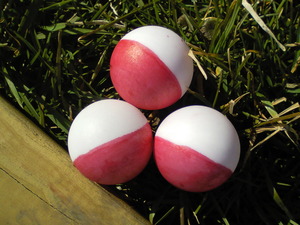Stage props also called properties of the theater, are tools of an actor’s trade. From Hamlet’s father’s skull (dubbed Yorick), to Laura’s glass menagerie is Tennessee Williams’ play of that name to the multitude of other items actors interact with, most every play requires some basic props or scenery pieces. A director may choose to use little scenery and few props, the lack of which evokes a certain mood. Used correctly, props and scenery should enhance our understanding of the show without distracting us. Fairy tales, fantasy, historical stories and mysteries rely heavily on props to give visual clues. Here are some guidelines for designing your own props.
* List and organize required props (some may fall in the category of scenery). Props not left onstage should be organized on a table offstage according to scene.
* Borrow when possible. Avoid using props (jewelry, crowns) of historical or financial value otherwise they will have to be insured.
* Check discount stores and secondhand stores for furniture, accent pieces, lamps, mirrors, books, dishes, pictures, bedding , pillows, purses, sports equipment and jewelry. You may even find some specialty items, like play weapons.
* Reuse holiday decorations. These work very well for fairy tales and fantasy. I placed strings of holiday lights in a borrowed tree to create a forest scene for my production of “The Chronicles of Narnia.” Fake snow, bead strings, garlands, tinsel stars, artificial Christmas trees, tinsel ornaments–all these make superb props and decorations.
* To make props, list items you’ll need to make with a brief description (jeweled chalice, axe, mirror for breaking) and required materials: wood, cardboard, metals, fabric , decorations, fake gems, feathers.
* Scrounge recycle bins for supplies. Appliance stores have dumpsters where they put large cardboard boxes. These work great for some props.
* Explore junkyards, thrift stores, craft and fabric stores discount sections, home improvement stores and lumber yards. Tell them what you’re doing; if it’s for a school play they may be able to give you a good deal.
* The theater is a magical world of illusion. Don’t be afraid to trust the audience’s willing suspension of disbelief and it’s ability to play along. S imulate wooden or metal props with Styrofoam or cardboard. If a play calls for a prop to be broken, make one solid prop and an identical one cut into pieces and reassembled. When it needs to be broken, use glass-smashing sound effects and break the pre-cut prop. For water, liquid or rain, use silver tinsel, colored foil or satin fabric; these are less messy and look really artsy from the audience.
* Slightly exaggerate prop size and color to make them visible to the audience. Where appropriate, such as in fantasy plays, use glue-on gems, metallic spray paint, brightly-colored crepe paper, foil, glitter and tinsel to make attractive props.
* Some props should be made to replicate their actual, real-life weight; it would be difficult to use a Styrofoam sword convincingly as it could not be wielded accurately. Be careful not to compromise safety with your props. Dull points and sharp objects.
Break a leg!




